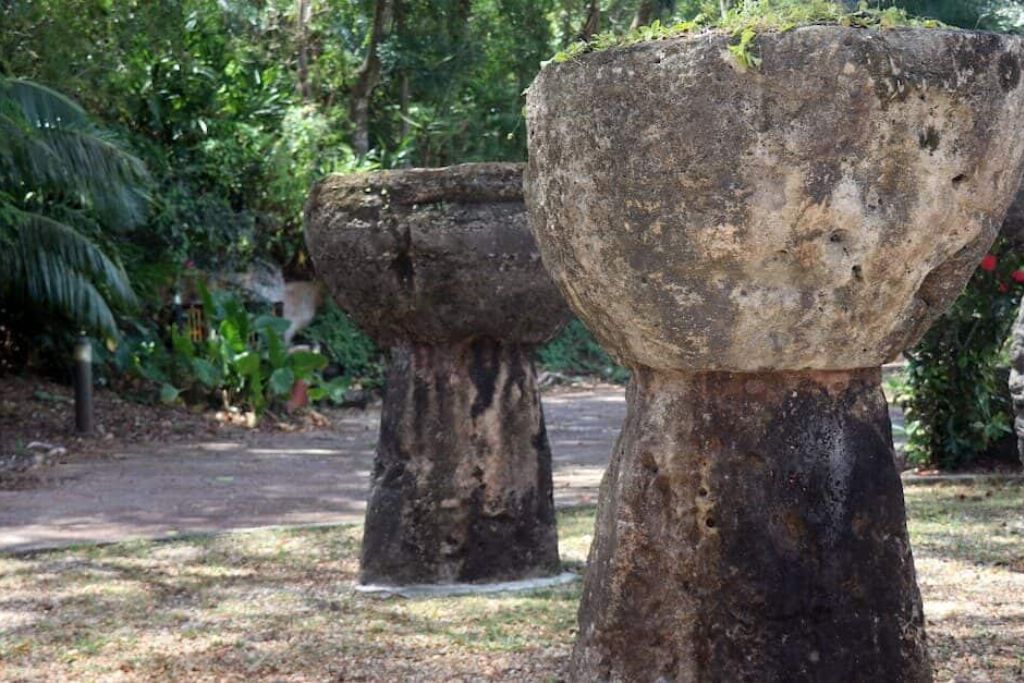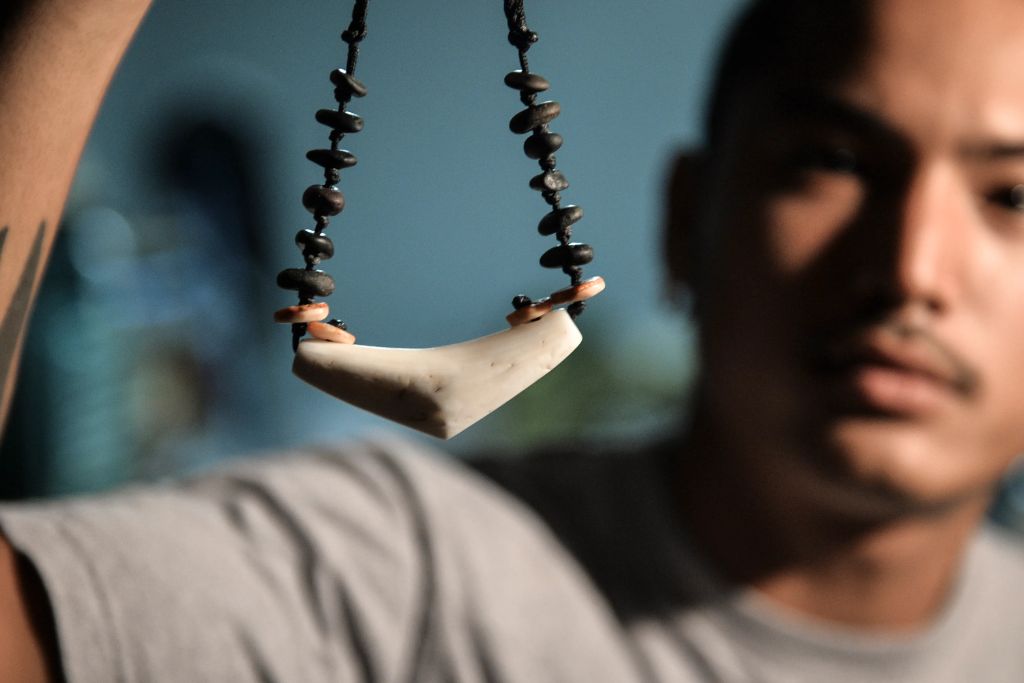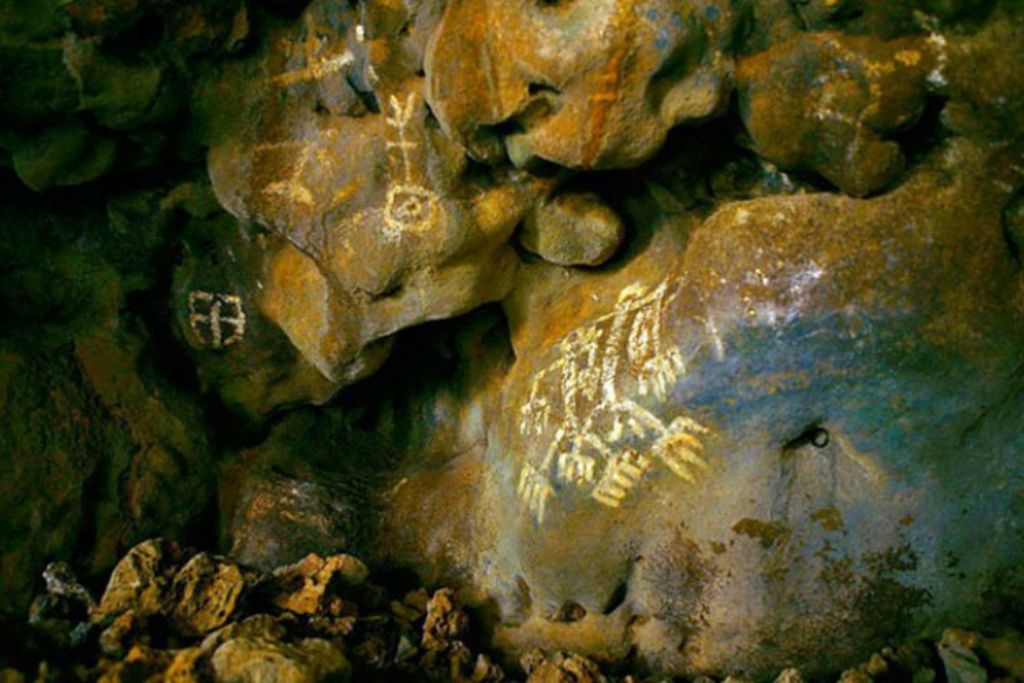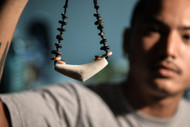The Stories Behind Guam’s Cultural Symbols
Posted by Maris on 6th Dec 2023
As you go across Guam, you will see symbols that are widespread in art, design, and architecture. Learn about the Chamorro cultural emblems that signify Guam's history, identity, and island pride.
Guam Seal

Before Guam had its own flag, the Spanish flag was flown over the island until 1898, when it was replaced by the American flag. On July 4, 1917, Helen Paul, the wife of an American Naval Officer stationed in Guam from 1917 to 1919, had a scenic drawing authorized and published in the "Plan of Guam Flag." The Guam flag debuted two days later, on July 6, 1917, and was formally hoisted over the island a year later, on July 4, 1918.
The Guam Seal is the oval centerpiece of the Guam flag. Helen Paul drew various sketches of Guam, including one with a lone coconut tree close to a river, a flying proa in the ocean, and the iconic Two Lovers Point peak in the distance. The Guam Seal's oval design represents the ancient Chamorro slingstone, a weapon masterfully wielded by the Chamorros. Overall, the traditional characteristics of the Guam flag represent the Chamorro people's power and resilience.
Visit the monument that sits on the place that is thought to have inspired the design of the famed Guam Seal for a live view of the seal. The monument sits near the mouth of the Hagta river, near the northern entrance to Paseo de Susana Park and Stadium in Hagta's capital.
Latte Rocks

The latte, which is as old as the Mayan Pyramids, was built by the Chamorros between 1200 BP and 300 BP (before present) and remained in use until the Spanish occupied the Marianas in the 1600s. The ancient Chamorros utilized latte as a foundation for houses and other major buildings, arranged in parallel rows of six to fourteen pairs. Latte are notable Chamorro cultural relics found on Guam, Saipan, Rota, and Tinian. This type of stone architecture is not known to have been used by any other society. These ancient pillars are now a symbol of Chamorro tenacity and cultural pride.
The Angel Santos Memorial Park in Hagta, Guam's capital village, is one of the greatest sites to see latte. Eight latte stones were erected and utilized by ancient Chamorros to support their wood and thatch dwellings. The park is one of the locations on the Hagta Walking Tour.

The Latte of Freedom monument, the largest modern-day latte, offers a panoramic view of Agana Bay from the edge of the Ricardo J. Bordallo Governor's Complex, commonly known as Adelup. Monday through Friday, 9 a.m. to 3 p.m., and weekends and holidays, 9 a.m. to 12 p.m.
Sinahi

Chamorro males are frequently seen wearing crescent moon pendants carved from hima (giant clam) shells. This distinctive sign is called the sinahi, which is Chamorro for "new moon."
The moon has long been important to the Chamorro people, who have lived on Guam and the Northern Mariana Islands for over 4,000 years. When French scientist Louis Claude de Freycinet visited Guam in 1819, he discovered that Chamorros utilized a lunar calendar before the Spanish occupied the Marianas. The Chamorro lunar calendar had thirteen moons (or months).
Just as ancient Chamorro seamen relied on the moon and stars to navigate the oceans, so did fishermen, hunters, and farmers. Each lunar phase, from new moon to full moon, had a calendar for what fish to catch, what seeds to grow, what animals to hunt, and other daily chores. Today, fishermen and farmers still utilize the moon as a guide, and the Chamorro lunar calendar is commemorated annually at the Gupot Fanha'aniyan Pulan CHamoru (Chamorro Lunar Calendar Festival).
Gadao Icons

The seaside village of Inarajan, nestled amid Guam's beautiful southern hills, was Chief Gadao's home village and the site of a fabled match of strength between Gadao and another chieftain, Chief Malaguana from the village of Tumon.
Malaguana went out to test Gadao and prove his dominance after a visitor challenged the generally accepted assumption that Malaguana was Guam's strongest chieftain. Malaguana encountered a man who appeared to be a simple farmer when he came in Inarajan. Malaguana explained his ambition to overcome Gadao in a strength competition, not realizing the farmer was truly Gadao. Gadao presented the Tumon chief coconut juice while concealing his identity by splitting a coconut with his bare hands. Malaguana pondered how much stronger this farmer's leader could be if an ordinary farmer could be so strong. Malaguana decided to give up his hunt.
Gadao offered his brother chieftain a boat ride back to Tumon out of sympathy. Each chief took up a paddle and headed out, unknowing that they were paddling in opposing directions. Dissatisfied with their lack of progress, the chiefs paddled harder and harder until the canoe broke in half. A statue of Chief Gadao seated in his half of a boat now stands on the shore of Inarajan Bay.
One of the outstanding specimens of Chamorro cave art may be found in Gadao's Cave, which is also located in Inarajan. The cave has approximately 50 pictographs, the most well-known of which portray two human figures side by side, one of whom looks to be holding something under his arm. It has been proposed that these figures symbolize the legendary Chief Gadao, who challenged and outwitted the northern Chief Malaguana in a strength test. This pictogram is commonly utilized as a symbol of Chamorro culture and identity in Guam art and design. Gadao's Cave was listed on the National Register of Historic Places in 1974.

